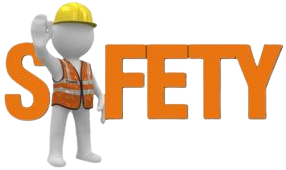1. Earn a Relevant Degree
A degree in a related field is often the first step toward becoming a safety manager. Common degrees include:
- Bachelor’s Degree in Occupational Health and Safety (OHS)
- Environmental Health and Safety (EHS)
- NEBOSH IGC
- Industrial Hygiene
- Engineering or Public Health
Some employers may accept associate degrees with substantial work experience, but a bachelor’s degree is generally preferred for managerial positions.
2. Gain Practical Experience in Safety
Experience is crucial for a safety manager. Many start in entry-level safety positions such as:
- Safety officer
- Safety technician
- Environmental health specialist
- Industrial hygienist
These roles allow you to get hands-on experience with workplace safety protocols, compliance standards, and hazard identification.
3. Obtain Professional Certifications
Certifications are highly valued in the safety profession and can help you stand out as a candidate for safety manager positions. Some of the most recognized certifications include:
- Certified Safety Professional (CSP): Offered by the Board of Certified Safety Professionals (BCSP), this is one of the top certifications for safety managers.
- Associate Safety Professional (ASP): A precursor to the CSP, also offered by BCSP, designed for those just starting out in safety roles.
- Certified Industrial Hygienist (CIH): Offered by the American Board of Industrial Hygiene (ABIH), focuses on health hazards in the workplace.
- Occupational Health and Safety Technologist (OHST): Another BCSP certification for those with technical safety responsibilities.
- Certified Safety and Health Manager (CSHM): Recognized for individuals in a safety management role.
Having these certifications proves your knowledge in safety regulations, risk assessment, and incident prevention.
4. Develop Leadership and Communication Skills
As a safety manager, you’ll need to communicate safety policies effectively and lead teams in implementing them. Strong leadership and interpersonal skills are crucial because you’ll often need to enforce compliance, influence behavior, and drive a safety culture within the organization.
You can develop these skills through:
- Leadership training programs
- Workshops on communication and conflict resolution
- Experience managing safety programs or teams
5. Stay Up-to-Date with Regulations
Safety managers must be knowledgeable about current local, state, and federal regulations. Familiarity with standards from organizations like:
- Occupational Safety and Health Administration (OSHA) (U.S.)
- International Organization for Standardization (ISO) for global standards like ISO 45001 for occupational health and safety management systems.
Keeping up with regulatory changes and industry best practices is key to maintaining compliance and preventing workplace accidents.
6. Network in the Safety Industry
Networking with other safety professionals can provide valuable insights, job leads, and learning opportunities. Consider joining organizations such as:
- American Society of Safety Professionals (ASSP)
- National Safety Council (NSC)
- Institute of Occupational Safety and Health (IOSH) (UK-based)
Attending safety conferences and seminars can help you stay updated on industry trends and technologies while building a strong professional network.
7. Pursue Advanced Education (Optional)
While a bachelor’s degree is sufficient for many safety manager roles, some pursue Master’s Degrees in Safety Management, Public Health, or Environmental Management to gain advanced knowledge and skills. This can lead to higher-level management positions or specialized safety roles.
8. Apply for Safety Manager Roles
Once you’ve gained the necessary experience and certifications, you can begin applying for safety manager positions. Look for opportunities in industries such as:
- Construction
- Manufacturing
- Healthcare
- Transportation
- Oil and Gas
- Government agencies
9. Continuous Professional Development
As workplace safety is an evolving field, ongoing learning is essential. Regularly attend training programs, seek new certifications, and stay informed about technological advancements in safety, such as safety management software or wearable safety tech.


Leave a Reply